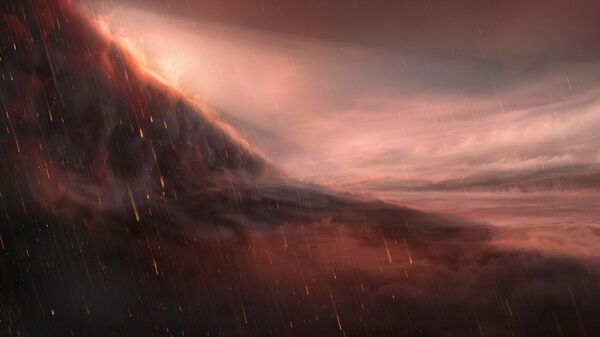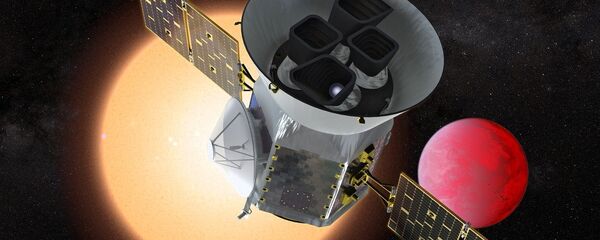According to astronomers, the ultra-hot giant exoplanet experiences staggering 4,400F (2426 C) temperatures and is tidally locked, meaning that one side of WASP-76b always faces its star and so is hot enough to vaporize metal, ripping the molecules apart into atoms.
According to researchers, extreme conditions on this exoplanet generate strong winds that carry iron vapours to the cooler night side where it "condenses into iron droplets".
“One could say that this planet gets rainy in the evening, except it rains iron”, David Ehrenreich, a professor at the University of Geneva in Switzerland, said in a press-release. Ehrenreich led a study about the newly-discovered planet that was recently published in the journal Nature.
Researchers compare WASP-76b to our own tidally-locked Moon to explain the phenomenon of the molten iron rain. The 'iron rain' planet, like the Moon on its orbit around the Earth, is 'locked' and takes "as long to rotate around its axis as it does to go around the star", although the newly-discovered exoplanet is thought to orbit its parent star - a relatively young A-type - at a distance of about 3 percent that of the distance between the Earth and our sun and at an astounding speed of one complete orbit over the equivalent of just two Earth days.
WASP-76b reportedly receives thousands of times more radiation from its parent star than the Earth does from the Sun, astronomers suggest. According to the study, the 'iron planet' also has distinct day-night chemistry. Using the ESO optical telescope array, researchers detected a strong signature of iron vapour at the evening border separating the planet's day and night sides.
According to the study, the striking difference between the two sides of the planet means that local wind gusts can reach upwards of 11,184 miles per hour (18,000 kilometers per hour).
“The observations show that iron vapour is abundant in the atmosphere of the hot day side of WASP-76b. A fraction of this iron is injected into the night side owing to the planet's rotation and atmospheric winds. There, the iron encounters much cooler environments, condenses and rains down", according to María Rosa Zapatero Osorio, an astrophysicist at the Centre for Astrobiology, in Madrid, Spain.


